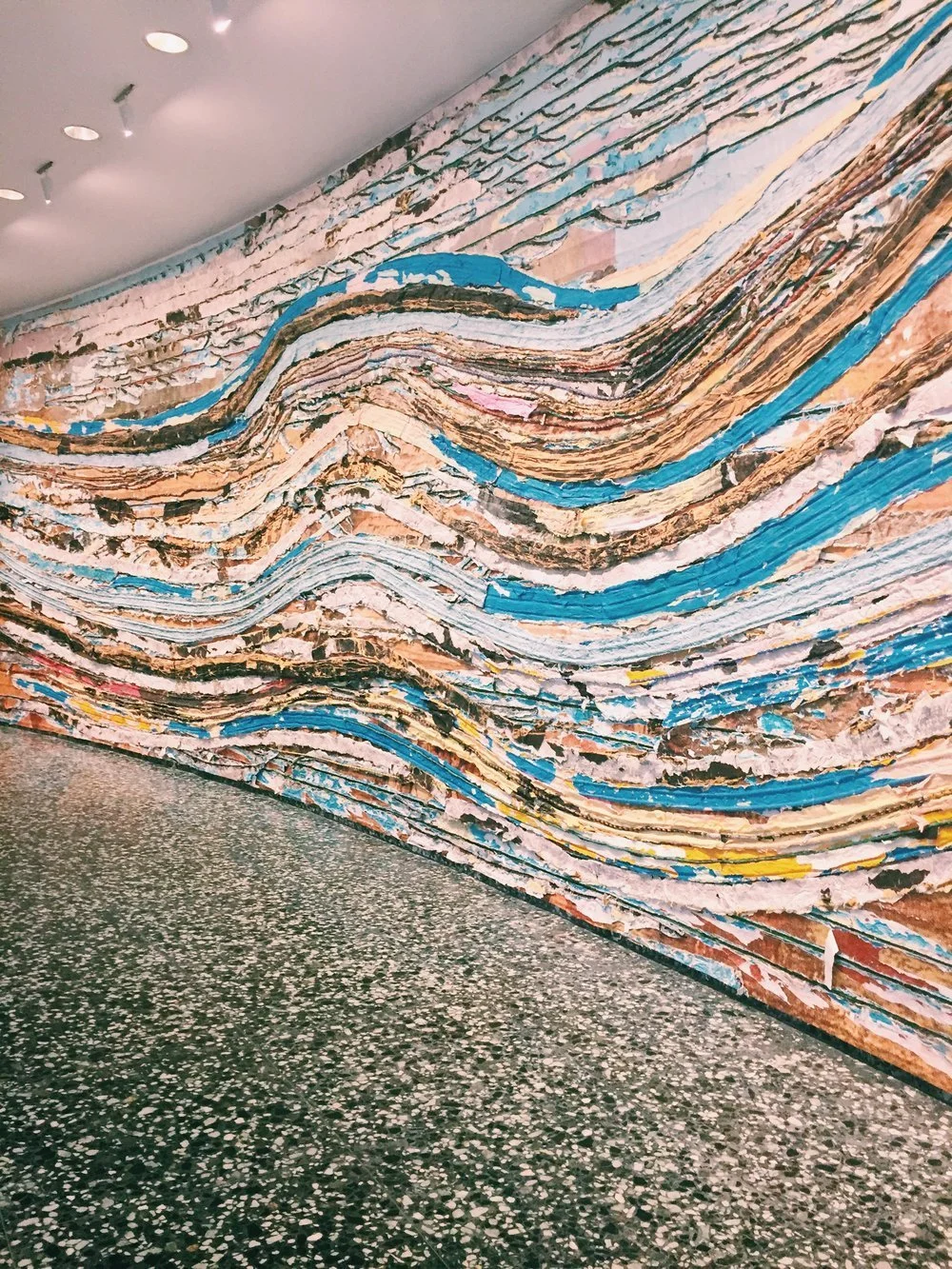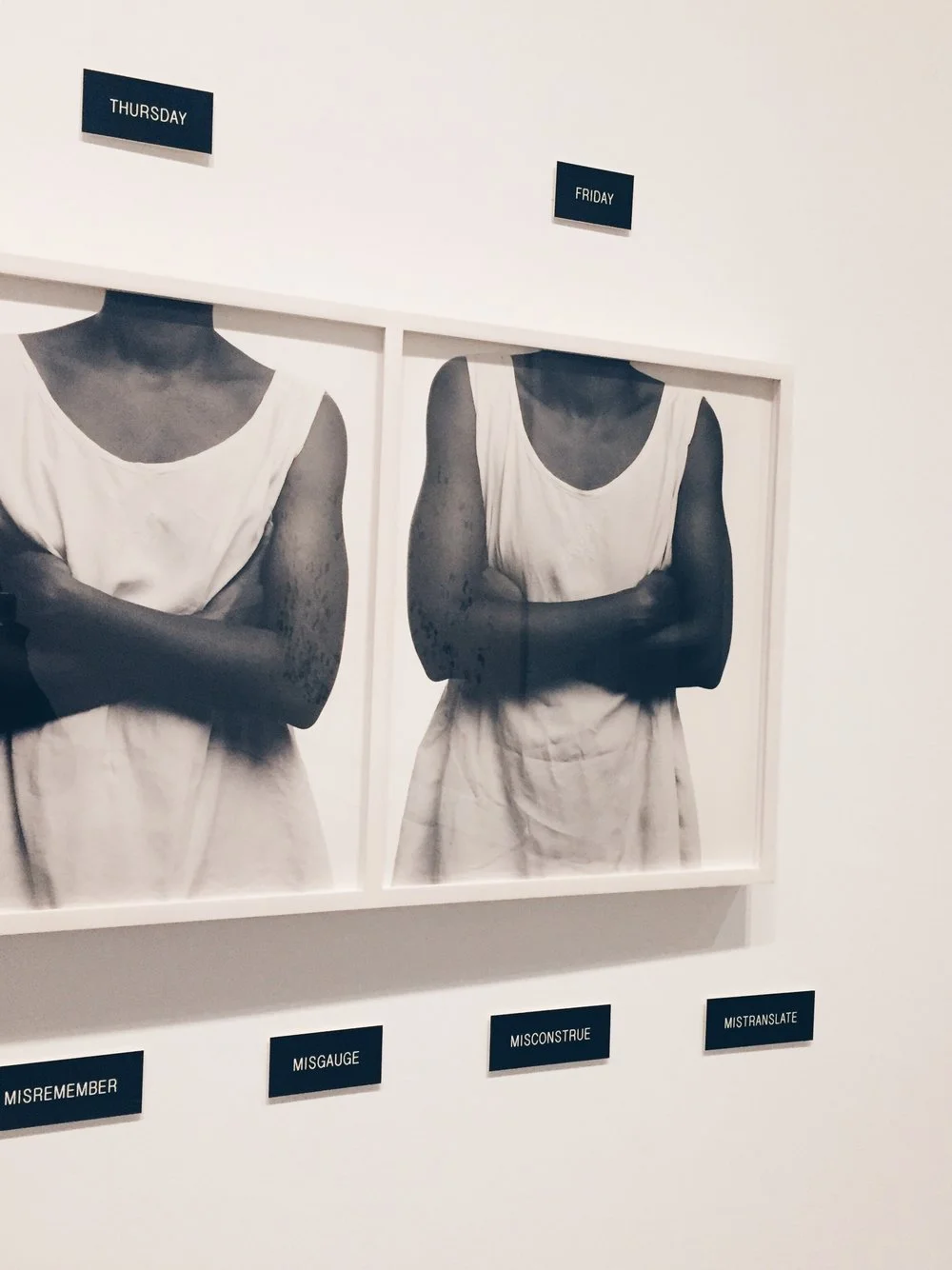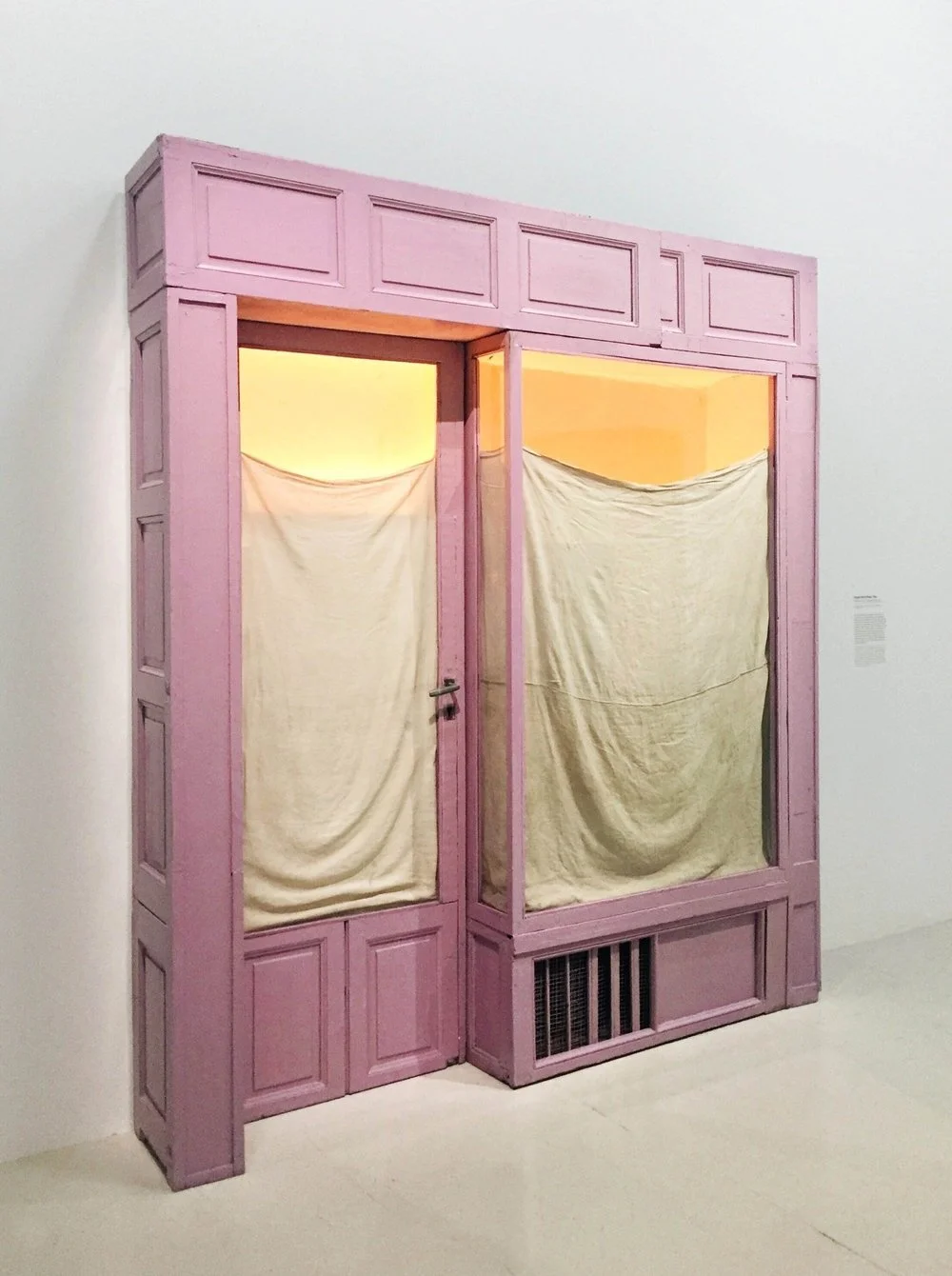Exhibition Review: Mark Bradford at the Hirshhorn
I am currently an intern at the Smithsonian Institution's Hirshhorn Museum and Sculpture Garden, where I often give tours of the featured art. One piece I almost always include in my tours is Mark Bradford's Pickett's Charge, a massive collage installment commissioned specifically for the Hirshhorn. It encircles the entire inner ring of the museum.
At first glance, the piece looks like a cool collage installation with interesting colors and material. But, it is also a socially aware and highly political piece. There are so many interpretations and lenses with which one can dissect the piece, and I've written this post to give context and help facilitate possible interpretation.
Mark Bradford
Mark Bradford (1961-) is a big deal. He is probably among today’s most famous living contemporary artists. He even represented the United States at the most recent Venice Biennale.
Bradford is an African-American artist, born and raised in South Los Angeles, where his mother owned a beauty salon. He began making art with found materials from the salon and around his neighborhood…most notably paper. Paper is his primary medium. He has stated that he does not need paint, as paper is permanent pigment.
Bradford likes to explore socio-political issues with his work (which is usually abstracted) and often references art history.
How the Collage Was Made
Bradford actually appropriates a painting of a civil war battle from the 1800s. The historical painting was displayed in a cyclorama, an old form of entertainment (that desolate time before television, movies, and the internet) where iconic historical moments were painted as a 360˚ mural, often with 3D figures and props.
Bradford took layers and layers of paper, gridded by ropes, and then placed a billboard-printed version of the historical painting as the top layer. He then proceeded to go back into the collage and rip through, burn, and bleach sections of it. Bradford also rips out the ropes in certain sections and uses them as appliqués. Each panel of the collage weighs more than 700 lbs.
What Does It All Mean?
This is where it gets interesting. First, there is clear symbolic importance in the choice of appropriating a civil war painting. This war changed the course of the country's history, and most notably led to the abolition of slavery. The original cyclorama painting provides a narrative of a specific war battle. Bradford seems to challenge this narrative through the literal ripping and exposing of layers underneath. By destroying the imagery, he is not only referencing the inherent violence of war, he is questioning the way we look at history.
History is often told like a novel. There is a plot and there are characters. But who is telling the story? Bradford challenges the validity of traditional historical narrative by exposing the layers underneath. It is also important to note that the panels have no particular order, another way in which Bradford subverts traditional storytelling. His use of brightly colored paper is significant not only because it represents the influence of street art and found materials from his upbringing, but also because these are colors that could not be massed produced until our contemporary era. So, this collage becomes even more so a literal merge of past and present.
The original painting becomes almost completely obscured by the violent processes enacted to create the final collage. Besides the historical references and Bradford's typical exploration of history and politics, the rest is up for interpretation. I frequently hear unique and insightful interpretations of this work from museum visitors. Even Bradford himself has said the abstraction in this piece should allow for a variety of interpretations. That's what I appreciate about modern and contemporary art, its ability to involve the viewer in its purpose.
Pickett's Charge will be on view until 2021.











